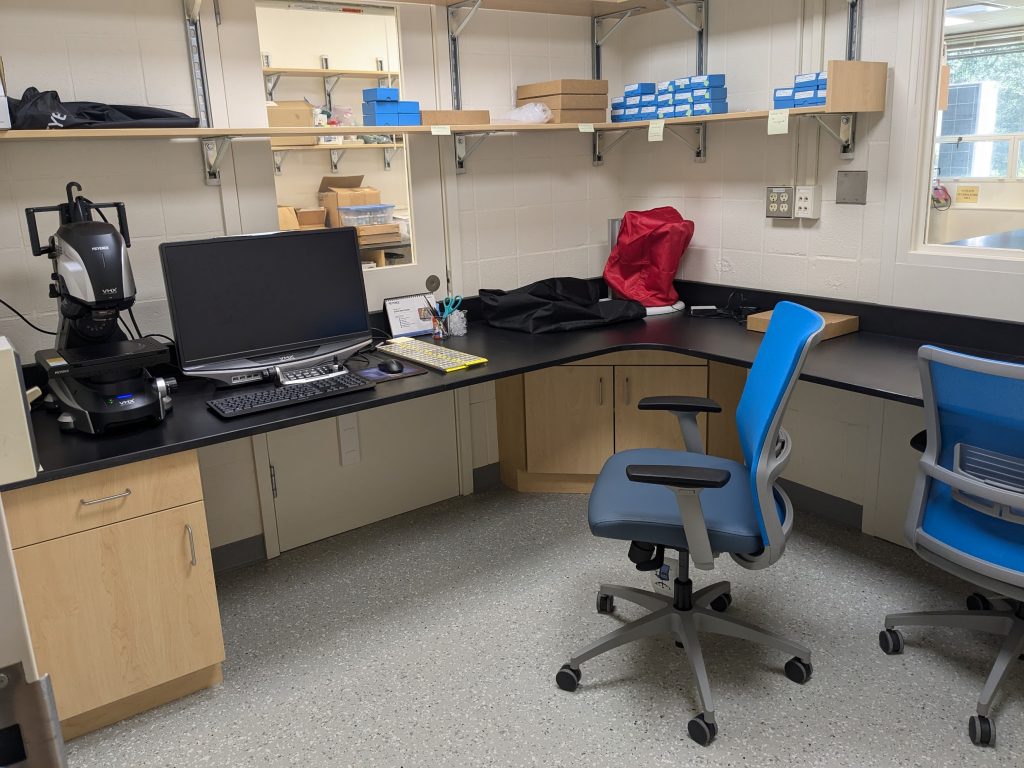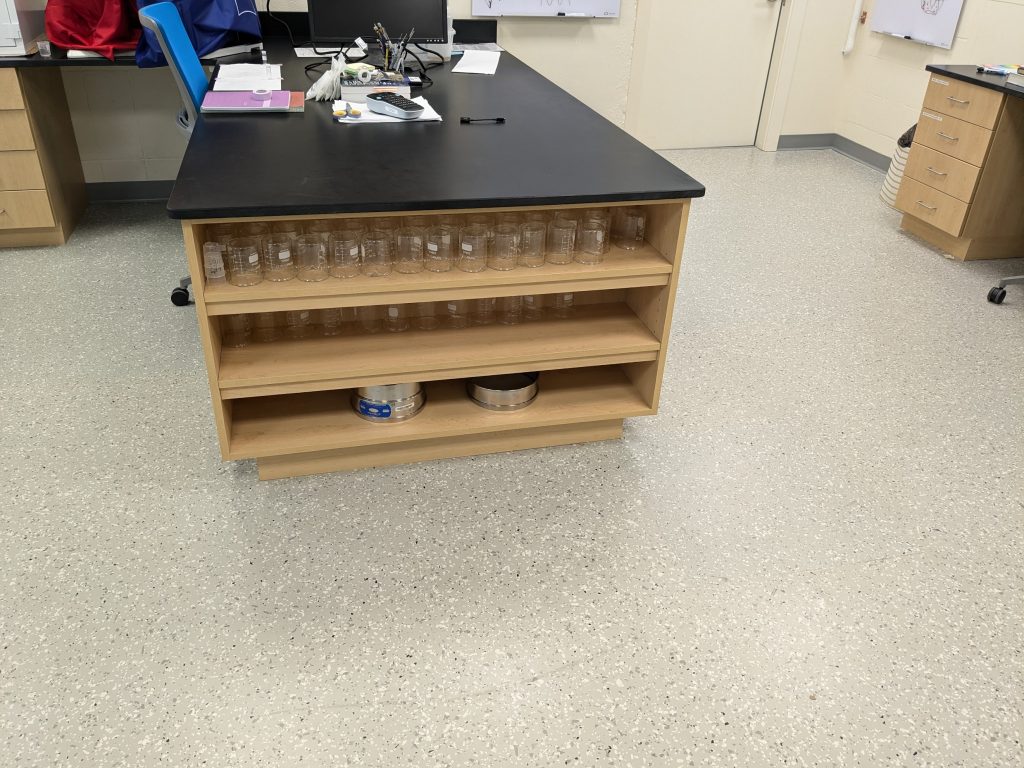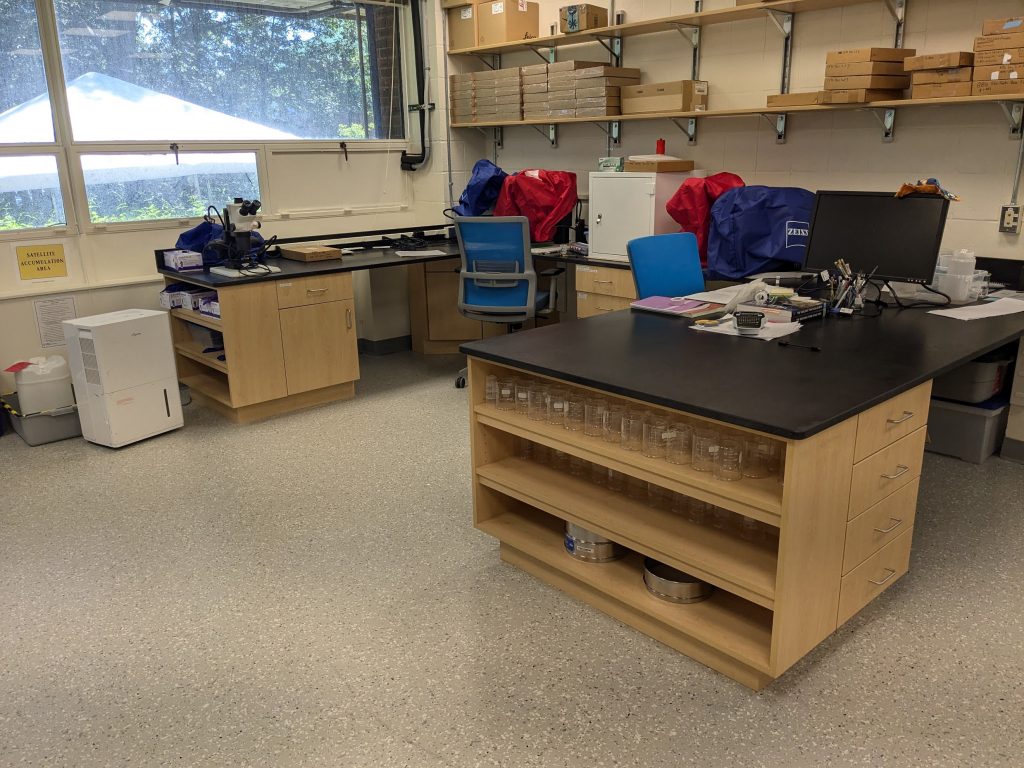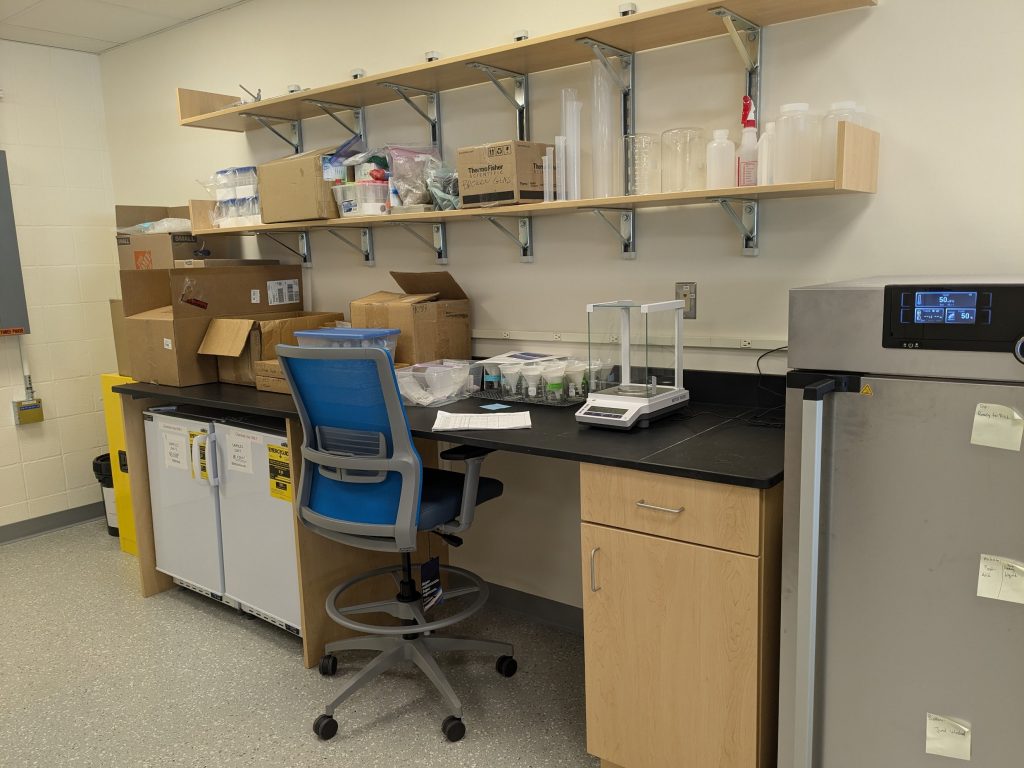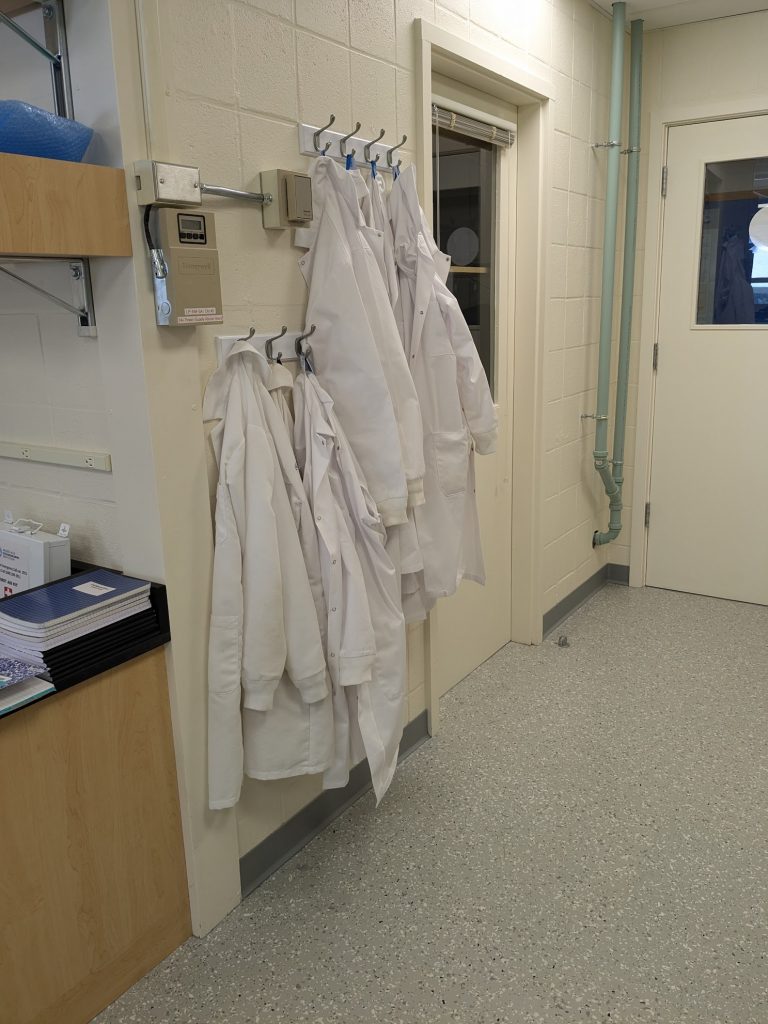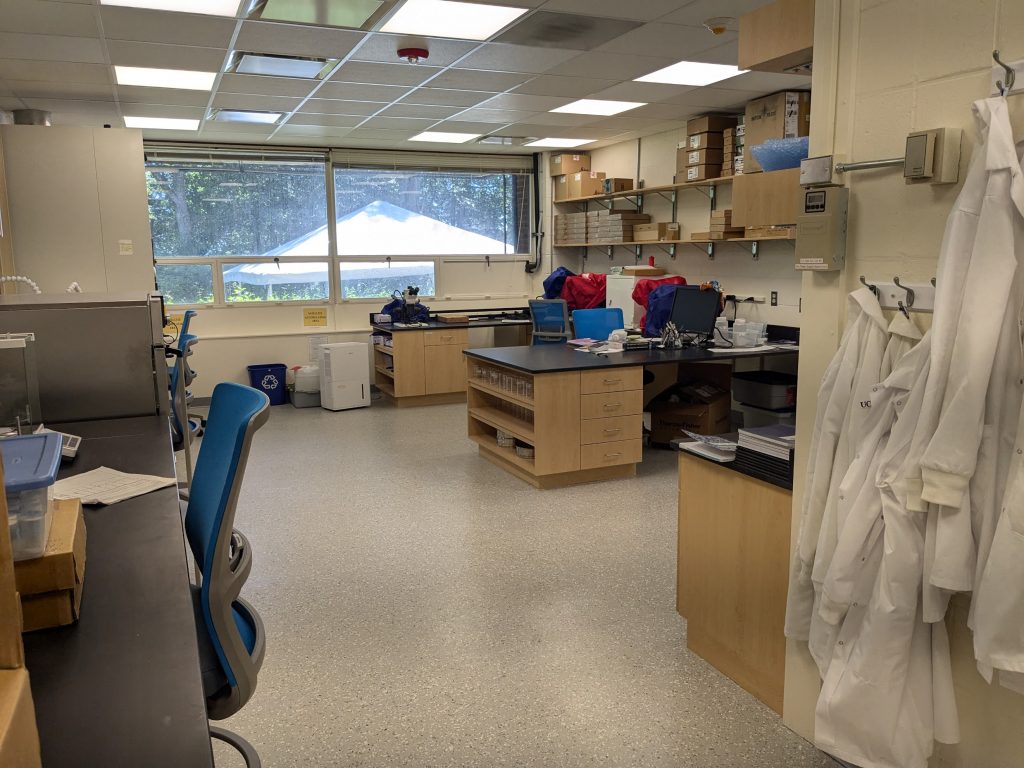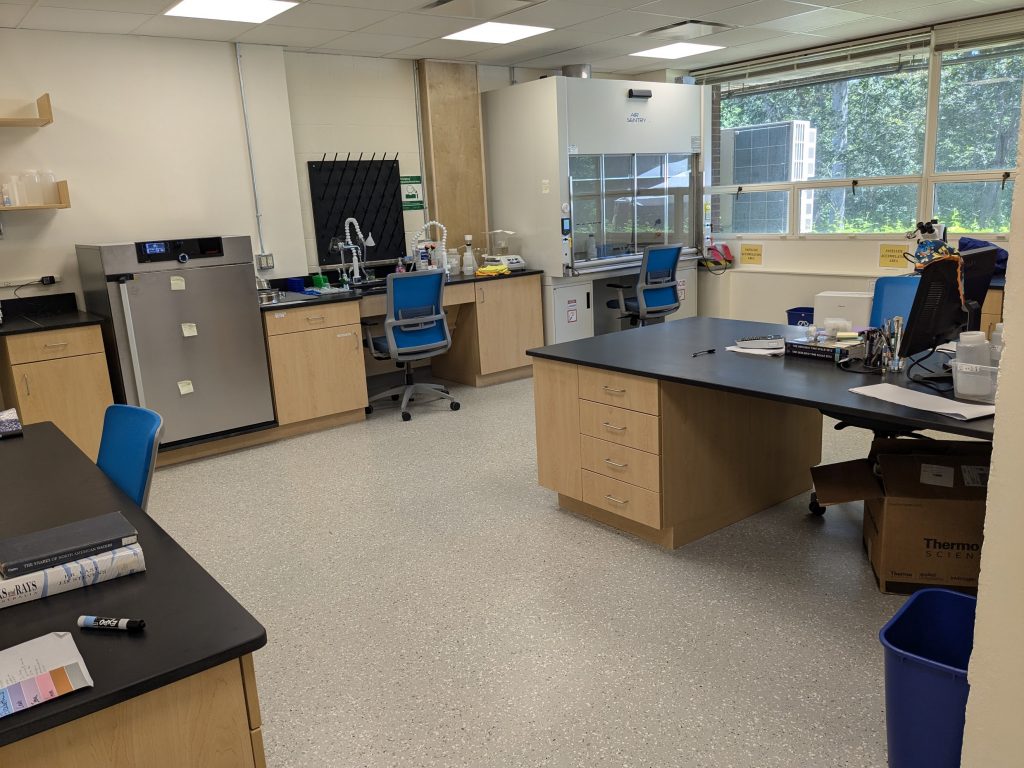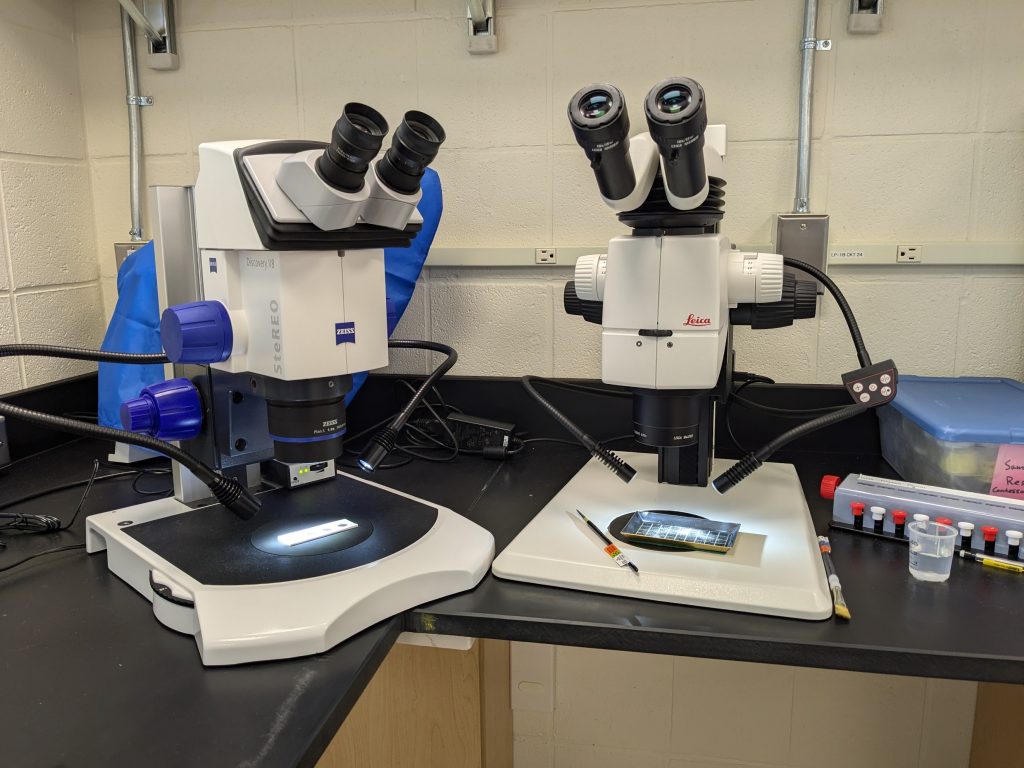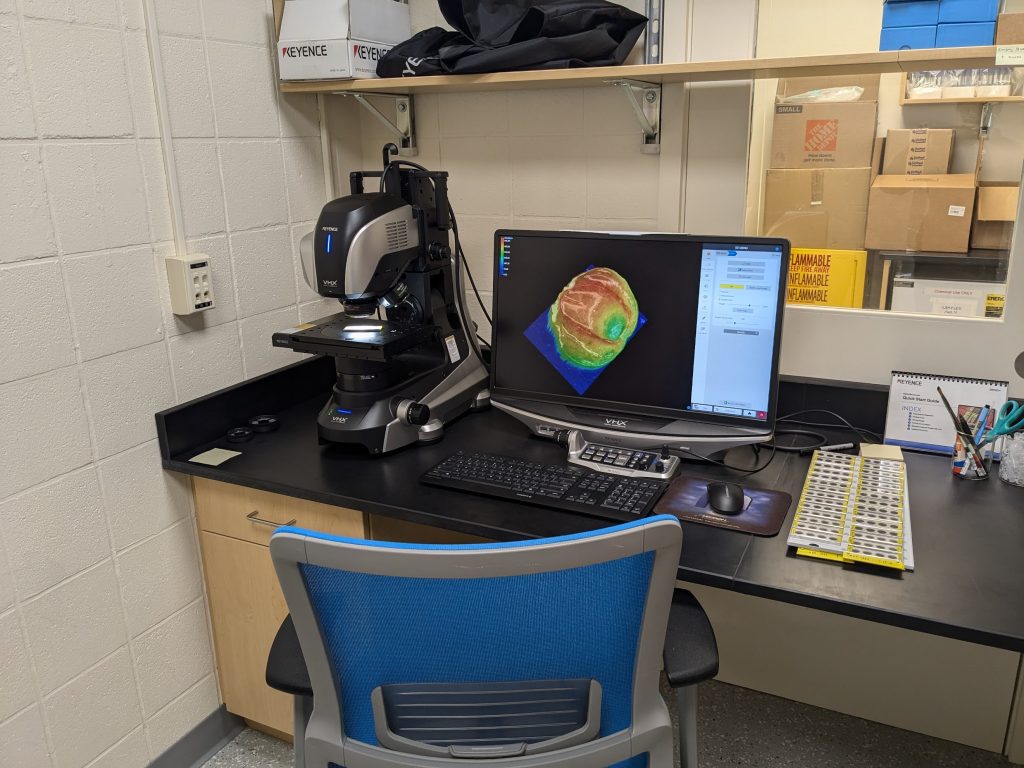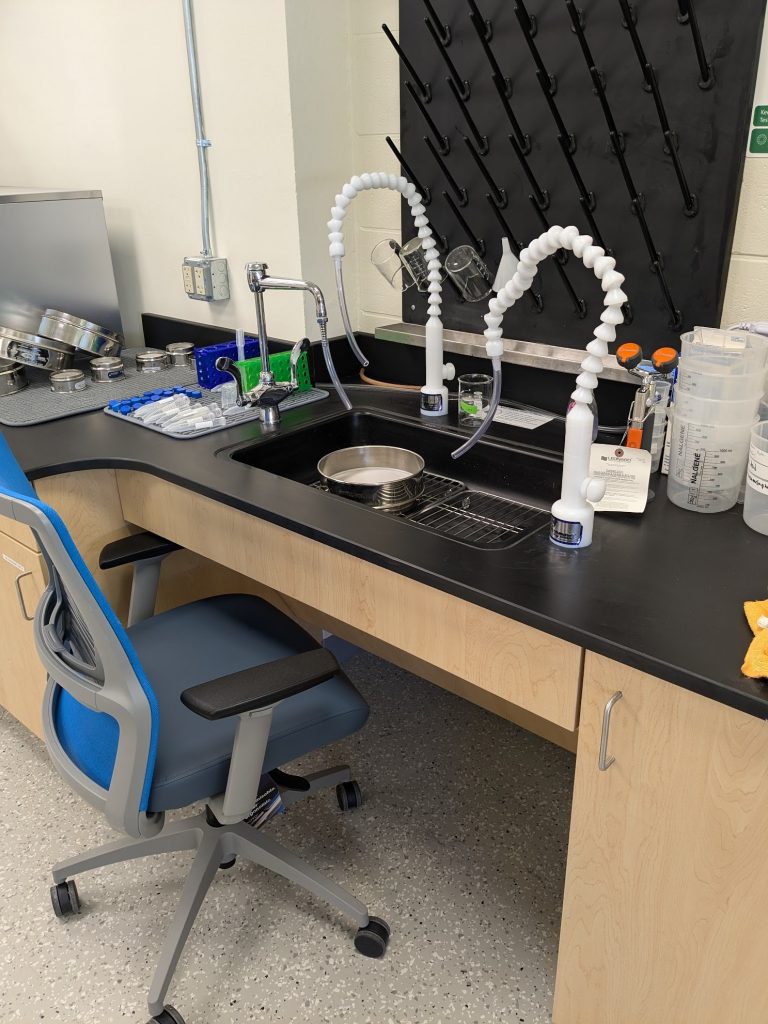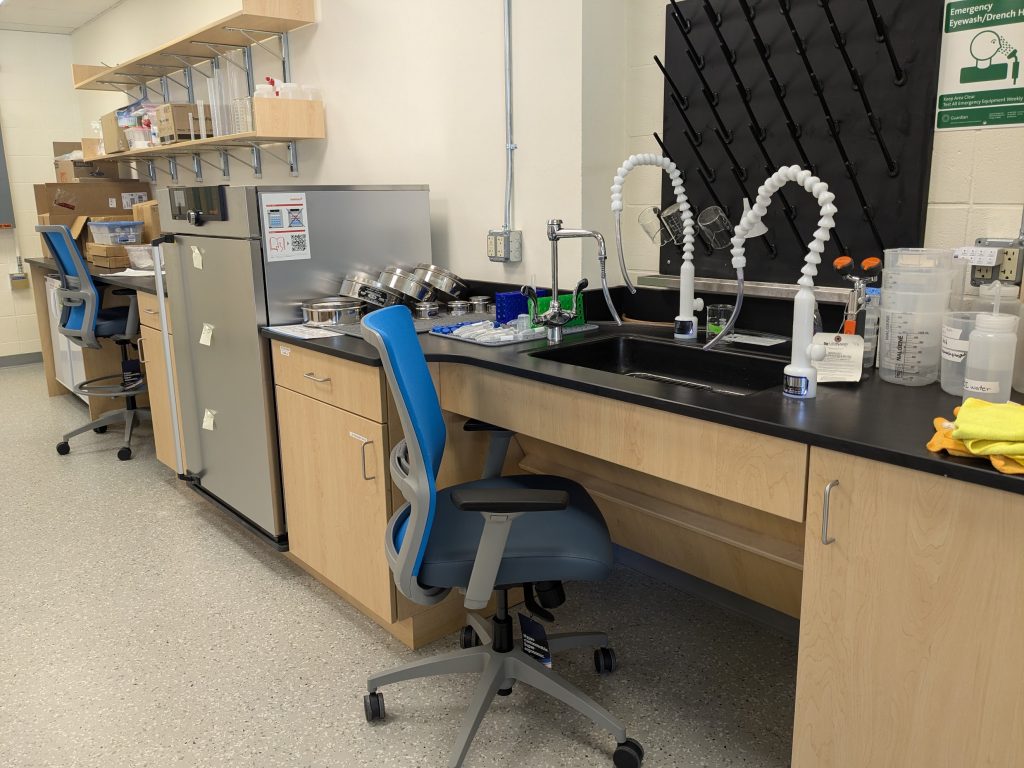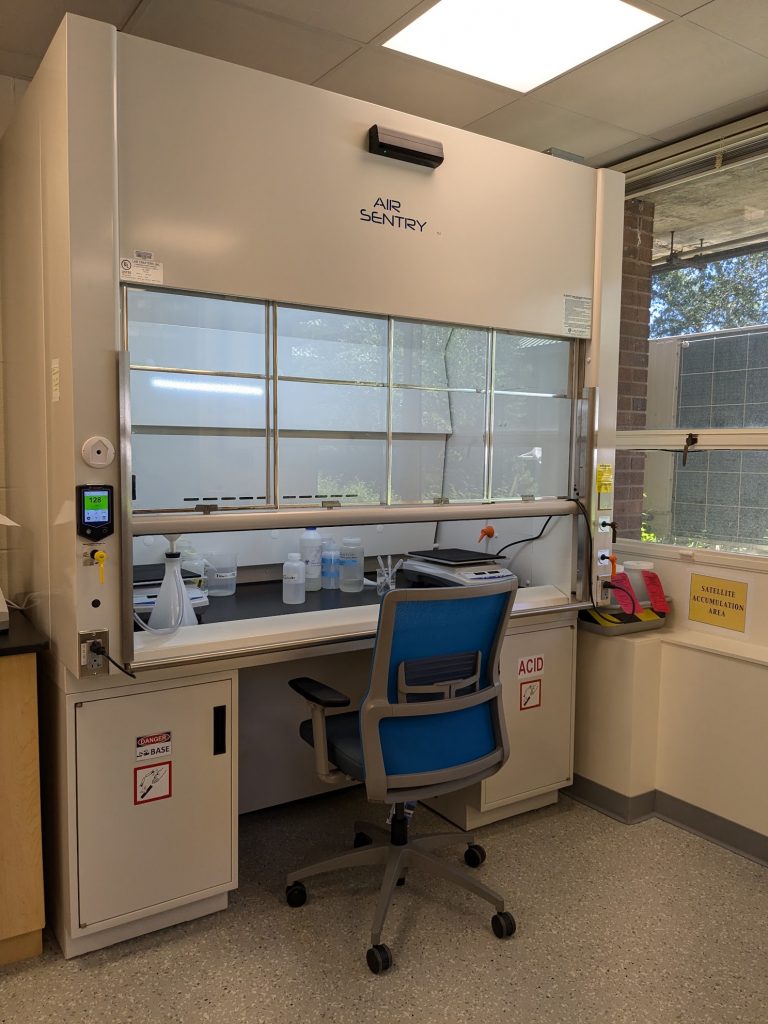ADA-Friendly Lab Facilities
The Paleo-FISHES Lab is proud to be the first ADA-informed lab at WHOI (though we hope not the last!). We are a fully functioning sediment processing and micropaleontology laboratory with a variety of features, including a roll-under sink and fume hood, seated-height and standing-height workspaces, extra-wide aisles for increased maneuverability, rounded corners, lowered storage, open shelving, extra drawers, flashing fire alarms, easily movable stools, inclusive-sized lab-coats, a service dog safety plan, and more. We recognize that not every need can be met within one space, and that one person's needs may preclude another's. For this reason, the Paleo-FISHES Lab space is flexible, constantly evolving, and is excited to continue to expand our features and functions as new folks join the lab. The lab also welcomes anyone in the area who has need of this kind of workspace. If this applies to you, please reach out to discuss whether the lab space can support the scientific work that you are doing!
In addition to the flexible workspace features, the Paleo-FISHES Lab relies on advanced microscopy to do our work. We have a Keyence VHX-7100 Digital microscope, two Leica M205 reflected light microscopes, one Leica S8 Apo light microscope, three Zeiss Discovery V8 light microscopes, and a Zeiss Primo Star light microscope. We also have a sediment processing setup which includes sieves, orbital shaker tables, hot plates, heavy liquid separation capabilities, and more.
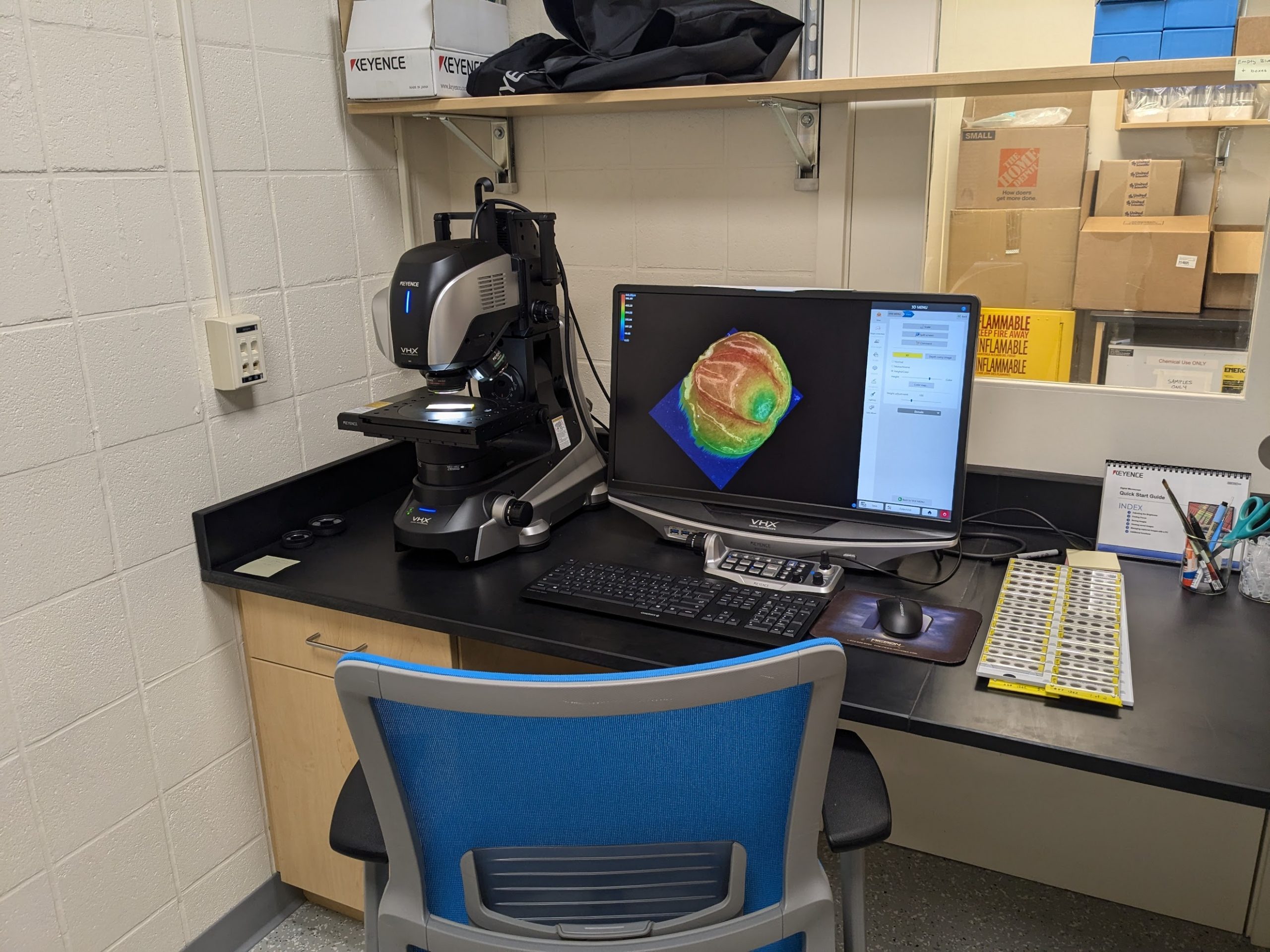
Keyence VHX-7100 Digital Microscope
The Keyence VHX-7100 Digital Microscope in the Paleo-FISHES Lab can take high resolution images up to 2500x using both reflected and transmitted light. It is capable of X-Y-Z stitching, and can image objects as large as 10x10cm, and down to just a few microns and occasionally smaller. It can also create 3D contour/surface maps of objects - essential for our work on microfossil morphology. The Keyence Digital Microscope is located in a smaller room with blackout shades that can be used to standardize and block external lighting and improve image quality. If you are a local researcher interested in using the Keyence to take pictures of your research, we are always excited to collaborate, see cool things, and share the instrument! Please reach out to Elizabeth Sibert directly to discuss.
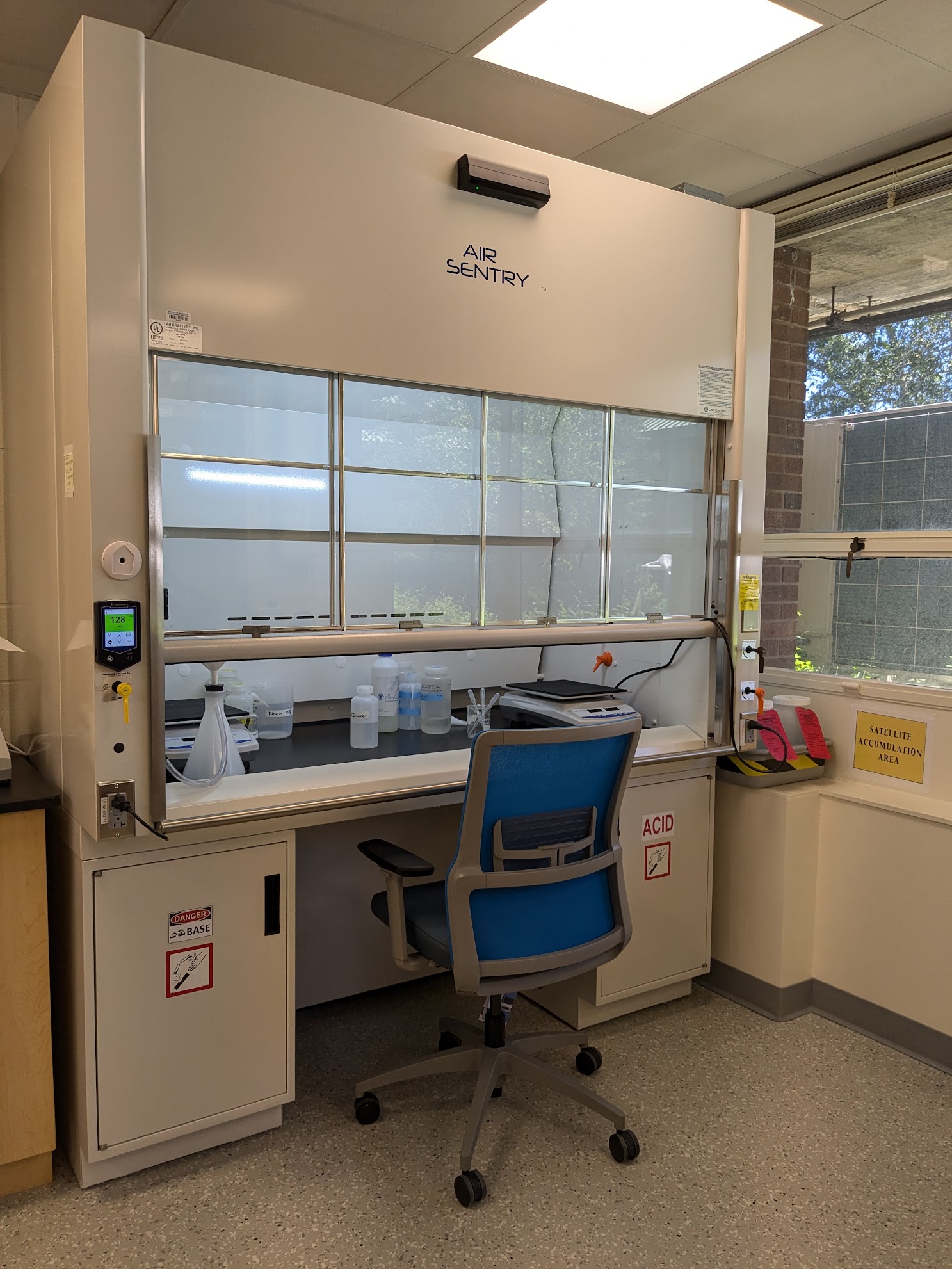
Roll-under Fume Hood
The fume hood in the Paleo-FISHES Lab is lowered and includes a designated knee-space to facilitate seated or standing work. It also includes a grab bar on the front of the hood to facilitate safe pushing and pulling into place without having to grab the hood itself. The fume hood was constructed by Air Sentry and includes a push-button hood and sash control system as well as manual hood control. The sash opens vertically and also horizontally, providing options for different users. All controls and outlets are on the front of the hood within easy arms reach while seated.
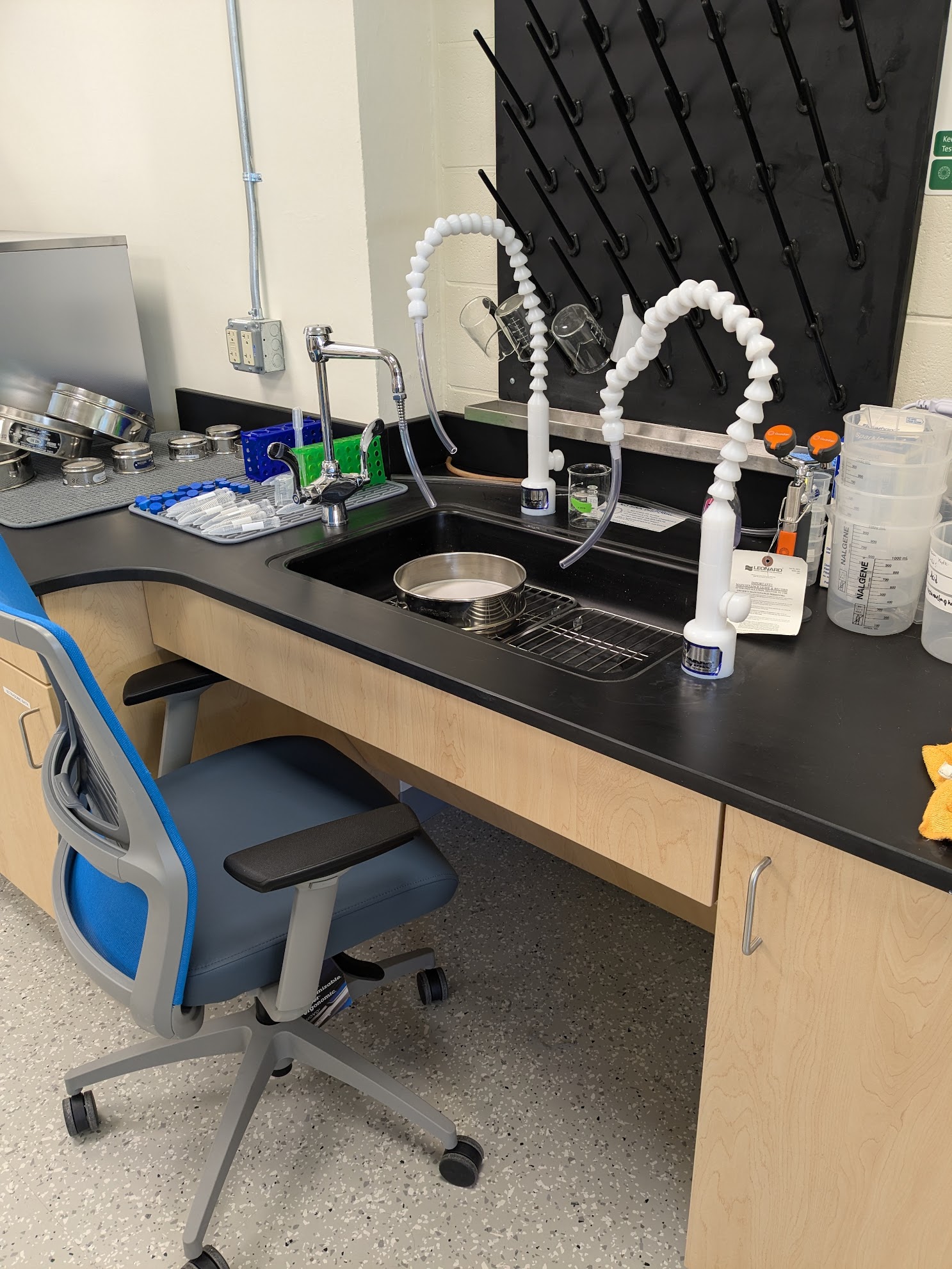
Roll-under Sink
The sink in the Paleo-FISHES Lab is on a 32" height counter, and is a 5" deep sink (compared to 8" or 13" for most laboratory sinks). There is a dedicated knee-space under the sink, and the plumbing is protected with a removable wood panel. The faucets are placed on the sides of the sink for easier reach. This configuration facilitates seated or standing work, and allows for the user to place and reach objects easily on the bottom of the sink. In our experience, the 5" sink depth makes washing samples easier and more efficient than a traditional sink depth - and we find we make less mess splashing water, too! The two DI water faucets, from PicoTap, are able to hold their position, making it easier to wash samples with minimal dexterity required. Our ultrasonic bath (sieve cleaner) is on a pull-out shelf next to the sink for easy access, with a soundproofed door to keep the sound contained.
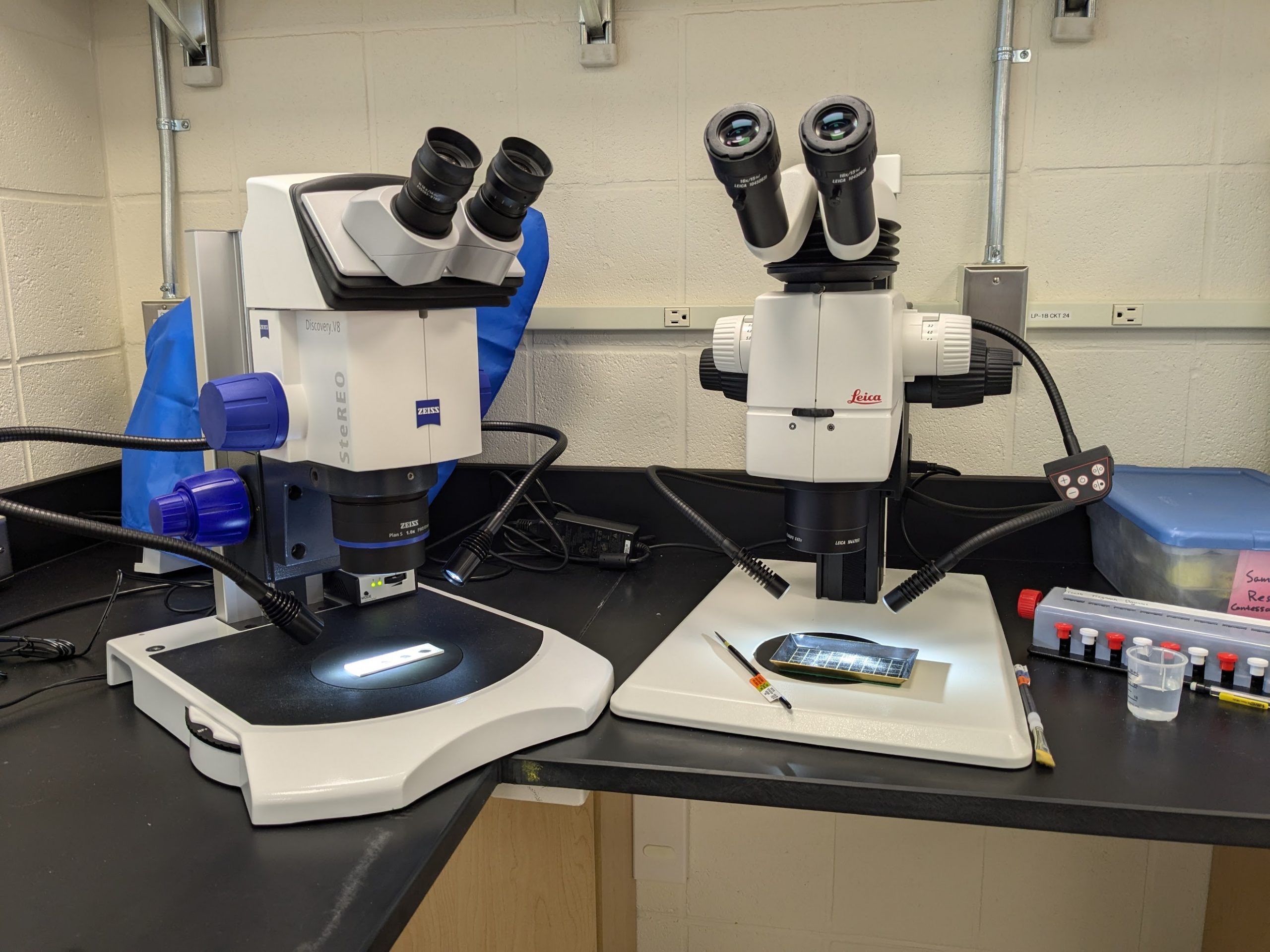
Microscope Picking Stations
The Paleo-FISHES Lab has multiple microscope stations for ichthyolith (and general microfossil/sediment) picking. As these fossils are incredibly small, having paired microscopes allows us to work efficiently without losing valuable fossils. Most of these microscope stations are located in the open space of the big lab, and one is in the smaller room with the Keyence Digital Imaging setup.
Our dissection microscopes can do reflected and transmitted light microscopy and include:
- Leica M205, 10x-120x magnification
- Leica S8 APO, 10x-80x magnification
- Zeiss Discovery V8, 16x-128x magnification
- Zeiss Stemi 508, 10x-80x magnification
We also have a Zeiss Primostar Compound microscope for samples mounted on glass slides.
